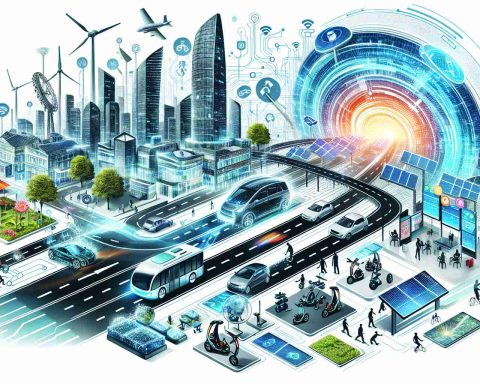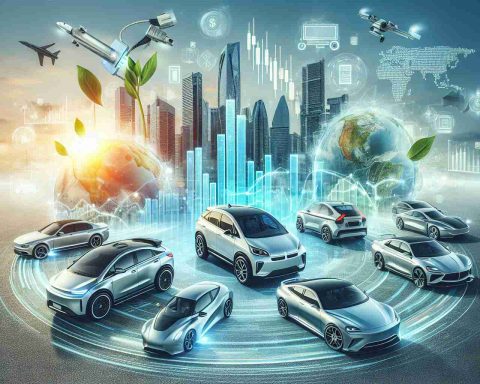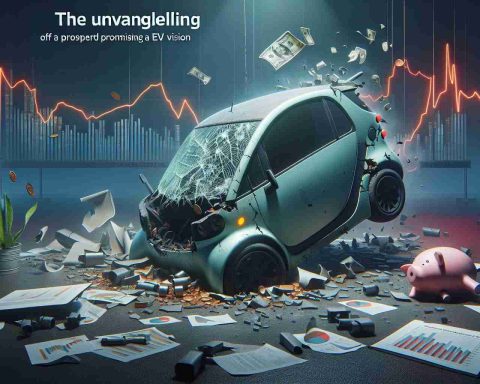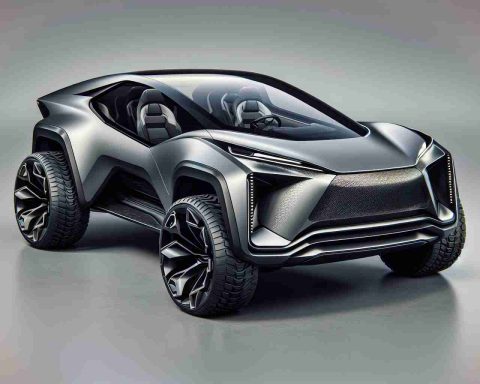The buzz at the 2025 Bharat Mobility Global Expo was palpable, especially when Tata Motors announced the return of its legendary Sierra SUV, drawing loud cheers from enthusiasts. Alongside this, the event prominently featured electric vehicles (EVs), a signal of the industry’s shift towards sustainability.
The expo, which runs until January 22, highlighted a variety of electrifying innovations. With several manufacturers debuting new models, including Tata’s premium AvinyaX electric concept and Mahindra’s range of EVs, it was clear that the future of mobility is being shaped by electric power. Vietnamese automaker VinFast also made waves with its VF6 and VF7 electric SUVs.
However, despite the excitement surrounding EVs, experts point out that they represent only a small fraction of the Indian automotive market—just over two percent as of 2024. Industry leaders stress the need for more compact electric models and improved battery technology to spur growth. They also emphasized the significance of enhancing the charging infrastructure, which remains a significant barrier for many potential EV buyers.
Consumers are seeking convenience in electric car ownership, yet urban obstacles such as inadequate charging options persist. For India to accelerate its transition to electric mobility, collaborative efforts from manufacturers, government, and local authorities will be essential to create a sustainable and practical EV ecosystem. As the country gears up for this electric journey, the future of transport hangs in the balance.
Driving Change: The Broader Implications of Electric Mobility
The emergence of electric vehicles (EVs) at significant industry events like the Bharat Mobility Global Expo is more than a trend; it reflects a seismic shift in society’s values and cultural perceptions surrounding mobility. As consumers increasingly prioritize sustainability, automakers are under immense pressure to innovate, leading to a broader push for environmentally friendly practices across various sectors. This transformation has substantial implications for the global economy, with emerging markets, particularly in Asia, playing a pivotal role in the EV supply chain and manufacturing processes.
The environmental impact of transitioning to electric mobility cannot be overstated. Each EV on the road potentially reduces carbon emissions significantly compared to traditional combustion engines. However, the challenge remains: the sourcing of raw materials for batteries, such as lithium and cobalt, raises concerns about resource depletion and the ecological impact of mining operations. As the demand for EVs grows, the need for more sustainable mining practices and battery recycling methods will become critical.
Future trends indicate a likely convergence of technology and transportation. Autonomous driving features and advanced connectivity are anticipated to enhance the EV experience, making these vehicles even more appealing. Long-term, a collective commitment will be necessary among stakeholders—manufacturers, consumers, and governments—to foster an ecosystem that not only embraces EVs but prioritizes sustainability, ultimately reshaping urban landscapes and reducing reliance on fossil fuels. The road ahead may be challenging, yet it also holds the promise of transformative change.
The Future of Electric Vehicles: Innovations and Challenges at Bharat Mobility Global Expo 2025
Overview of the Bharat Mobility Global Expo 2025
The 2025 Bharat Mobility Global Expo has become a pivotal event showcasing the dramatic evolution of the automotive industry, particularly in the realm of electric vehicles (EVs). With Tata Motors making headlines by reintroducing its iconic Sierra SUV, the expo draws attention to the industry’s commitment to sustainability and electrification, which are at the forefront of modern transport solutions.
Key Innovations at the Expo
Among the stellar lineup of vehicles presented, Tata’s premium AvinyaX electric concept stands out, promising advanced features and innovative design tailored for a new generation of drivers. Mahindra also introduced a range of cutting-edge EVs, contributing to the growing diversity of electric offerings in the market. Not to be overlooked, Vietnamese automaker VinFast showcased its VF6 and VF7 electric SUVs, indicating a competitive global landscape where various manufacturers aspire to capture market share.
Market Analysis and Current Trends
Despite the enthusiasm surrounding EVs at the expo, a stark reality exists: electric vehicles account for only about 2% of the Indian automotive market as of 2024. This percentage highlights significant growth potential but also emphasizes the challenges that lie ahead. Industry experts advocate for the production of more compact EV models that cater to urban drivers, pricing strategies that make EVs more accessible, and innovative battery technology to increase efficiency and reduce costs.
The Importance of Charging Infrastructure
One of the paramount obstacles to EV adoption is the inadequate charging infrastructure. Consumers often cite this as a major deterrent to purchasing electric vehicles. Urban areas in India are particularly challenged with insufficient charging stations, leading to range anxiety and concerns over the practicality of owning an electric vehicle. Experts suggest a coordinated approach between manufacturers and government authorities to expand the charging network, ensuring that urban EV owners have convenient access to power their vehicles.
Pros and Cons of Electric Vehicles
Pros:
1. Environmental Benefits: EVs significantly reduce greenhouse gas emissions compared to traditional gasoline vehicles.
2. Cost Savings: Lower fuel and maintenance costs can lead to long-term savings for owners.
3. Technological Advancements: Many EVs now come equipped with smart technology features, enhancing the driving experience.
Cons:
1. Limited Range: Current electric models may not match the range of gasoline vehicles, particularly in rural areas.
2. Charging Infrastructure: As mentioned, the scarcity of charging stations poses a significant barrier for potential EV buyers.
3. Initial Investment: Higher upfront costs can deter budget-conscious consumers from making the switch to electric.
Collaborative Efforts for a Sustainable Future
To pave the way for a successful transition to electric mobility, collaboration among automotive manufacturers, government entities, and local authorities is essential. By working together, these stakeholders can foster a more robust EV ecosystem, which includes developing battery technologies, expanding charging networks, and scaling production of various vehicle models tailored for different consumer needs.
Predictions for the Future
As India continues its journey toward electrification, we can expect to see a substantial increase in EV market share in the coming years. Innovations in technology, better-organized infrastructure, and improved consumer awareness could position electric vehicles as a key player in the Indian automotive landscape.
For more insights into the future of electric mobility and the latest developments in the automotive industry, visit Auto Expos.













